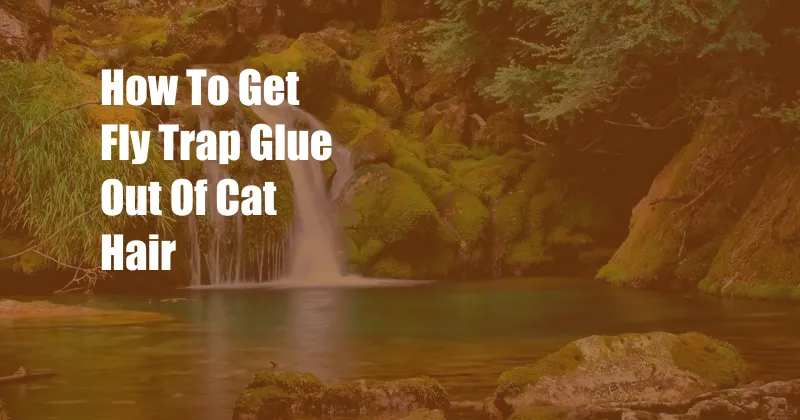
Fly Trap Glue: How to Safely Remove It From Your Cat’s Hair
As a cat owner, I know many joys and challenges that come with caring for these furry friends. One day, I faced a unique dilemma when my curious kitty got into a fly trap and ended up with its fur covered in sticky glue. It was a stressful moment, but I quickly realized the importance of removing the glue safely and effectively.
After some research and careful attempts, I was relieved to find a solution that worked without harming my beloved pet. In this article, I will share my experience and provide a comprehensive guide on how to get fly trap glue out of cat hair, ensuring the safety and well-being of your feline companion.
Keep Calm and Assess the Situation
When your cat gets into a fly trap, it’s natural to feel alarmed. However, it’s crucial to remain calm and assess the situation before taking any action. Observe the extent of the glue coverage, any signs of distress in your cat, and consider its individual sensitivity to different cleaning agents.
If the glue is only on a small area and your cat doesn’t seem too distressed, you can proceed with the removal process. However, if the glue has covered a large area or if your cat is showing signs of discomfort or irritation, it’s best to consult a veterinarian for professional advice and assistance.
Choose the Right Removal Method
There are several methods you can use to remove fly trap glue from cat hair, each with its advantages and disadvantages. Here’s a brief overview:
- Vegetable oil or baby oil: These oils can help dissolve the glue, making it easier to remove. However, they can also leave an oily residue on the cat’s fur.
- Dishwashing liquid: A mild dishwashing liquid can be effective in breaking down the glue. However, it’s important to avoid using products that contain harsh chemicals.
- Rubbing alcohol: Rubbing alcohol is a solvent that can dissolve the glue. However, it can be irritating to the cat’s skin, so it should be used with caution.
- Commercial pet glue remover: These products are specifically designed to remove glue from pet fur. They are generally safe and effective, but always read the instructions carefully before use.
Step-by-Step Removal Process
Once you’ve chosen a removal method, follow these steps to remove the glue safely and effectively:
- Gently restrain your cat to prevent it from moving or licking the affected area.
- Apply the chosen removal agent to a small area of the glue. Use a cotton ball or a soft cloth to dab the agent onto the glue.
- Allow the agent to sit for a few minutes to dissolve the glue.
- Gently brush or comb the glue away from the fur. You may need to repeat this step several times to remove all of the glue.
- Rinse the affected area with warm water and a mild pet shampoo.
- Dry your cat’s fur thoroughly using a towel or a hairdryer on a low heat setting.
Tips and Expert Advice
Here are some additional tips and expert advice to enhance the effectiveness and safety of the removal process:
- Never use harsh chemicals or abrasive materials to remove the glue, as these can damage your cat’s skin.
- Avoid getting the removal agent in your cat’s eyes or ears.
- If your cat starts to show signs of irritation or discomfort, stop the removal process and consult a veterinarian.
- Once you’ve removed the glue, apply a soothing ointment or balm to the affected area to help relieve any redness or irritation.
Frequently Asked Questions
Q: Is it okay to leave the glue on my cat’s hair?
A: No, it’s not recommended to leave the glue on your cat’s hair. The glue can irritate the skin, cause matting, and trap dirt and other debris.
Q: Can I use human hair removal products on my cat?
A: No, human hair removal products are not suitable for use on cats. They may contain harsh chemicals that can be harmful to your pet’s skin.
Q: How can I prevent my cat from getting into fly traps in the future?
A: Keep fly traps out of reach of your cat, and place them in areas where your cat is unlikely to go. You can also use pet-safe fly repellents to deter your cat from approaching fly traps.
Conclusion
Removing fly trap glue from cat hair can be a challenging task, but it’s essential to do it safely and effectively. By following the steps and tips outlined in this article, you can remove the glue without causing harm to your beloved pet.
If you’re still having trouble removing the glue, or if your cat shows signs of irritation or discomfort, don’t hesitate to consult a veterinarian for professional help.
Are you interested in learning more about pet care?